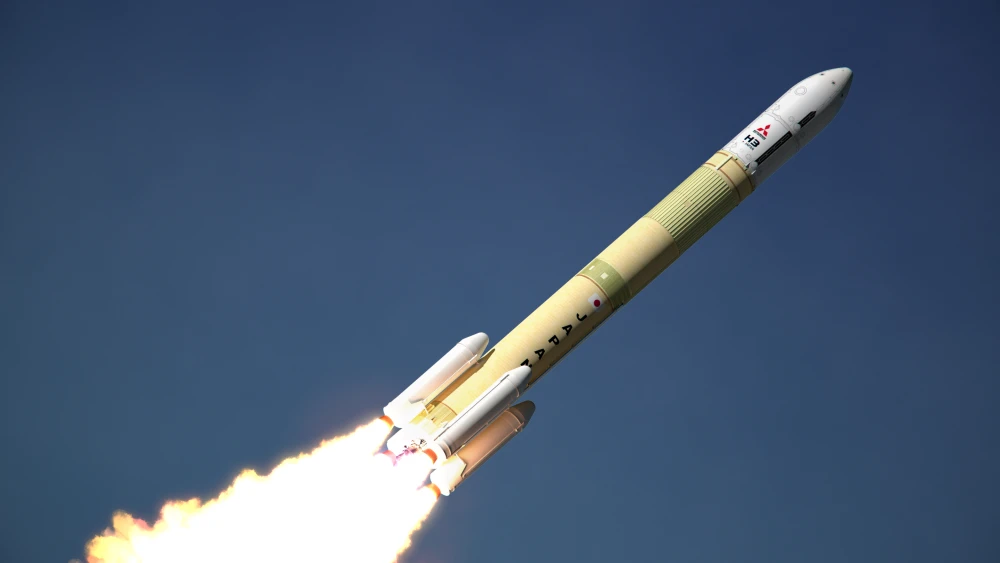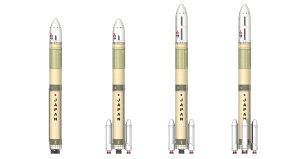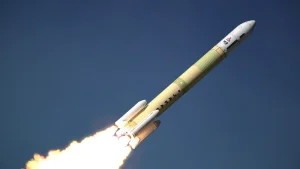
The goal is to provide an in-orbit telemetry relay service called “InRange” to reduce the dependency of launch providers on ground-based infrastructure. Instead, it will provide a global system using Viasat’s geostationary ELERA L-band satellite network.
By using the InRange service, for example, launch trajectories could be optimised by removing reliance of line-of-sight coverage with ground stations during critical stages of the launch. In some cases, says the UKSA, this will also reduce the fuel required to deliver spacecraft into orbit which in turn will increase the mass available for the launch customer’s payload.

NEC Space Technologies will also take part in the project, focusing on the L-band transmitter design that will be integrated into the H3 launch vehicle (pictured) by MHI. Jaxa is designated to both collaborate with the parties and play a technical role in integrating InRange into the ground infrastructure.
InRange
UKSA and Jaxa bilateral collaboration for InRange builds on the Memorandum of Cooperation signed between the agencies in 2021. Under this framework, InRange is jointly funded through UKSA’s International Bilateral Fund. The latest contract announced by the UKSA for Viasat is valued at £1.7m.
“The InRange service will be transformative for launch capabilities around the world, helping to make launch more sustainable by reducing both fuel needs and pressure on ground-based systems, so that spacecraft can take off on their journeys more efficiently,” said Dr Paul Bate, Chief Executive of the UK Space Agency.
“The UK Space Agency’s commitment to this project with ViaSat, Mitsubishi Heavy Industries and our counterparts at JAXA, through our International Bilateral Fund, puts into practice our firm belief that space is a team sport and that working together with organisations around the world is what enables us to break the barriers of space technology.”
MHI H3
For its part Jaxa highlighted the flexibility InRange will provide for flight trajectories:
“We would like to thank the UK Space Agency for selecting the InRange project as a project that will contribute to strengthening the economic and strategic relations between the UK and Japan in space,” said Masashi Okada, Project Manager, H3 Project Team, Space Transportation Technology Directorate of JAXA.
“The InRange service will increase the flexibility of the H3’s flight trajectories, and that will enable the H3 to meet the diverse needs of the launch customers than before. We will step up our efforts so as to successfully deliver the second test flight and will continue to promote the development of the H3 by realizing this project.”
MHI also addressed limited visibility of launch vehicles from ground stations:
“During planning of a launch vehicle’s flight trajectories, we sometimes experience constraints due to limited visibility of the launch vehicle from ground stations,” added Atsutoshi Tamura, Vice President and Senior General Manager of Space Systems at MHI.
“We believe that InRange is a solution that reduces such constrains and it will help us to continue to provide flexible launch services to a wide range of customers, for example commercial satellite operators and those planning planetary missions. We hope that this project will promote further collaboration between the UK and Japan in the space development industry.”
Developed in partnership with JAXA, the MHI H3 launch vehicle builds on the the H2 series, which sent the UAE’s probe to Mars in 2021.
Image: Mitsubishi Heavy Industries’ H3 space launch vehicle
See also: JAXA builds Japan nanosatellite capabilities to study star formation







